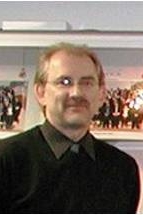Expertise & Current Research Activities
Research projects:
- Biosynthetic infochemical communication (iCHEM)
By exploiting recent advances in the understanding of pheromone biosynthesis pathways and pheromone detection and decoding in the insect nervous system, a new class of technology for infochemical communication is developed. The proposed infochemical communication system consists of (i) a "chemoemitter" microsystem which is capable of generating a precise mix of predefined synthesised compounds and (ii) a complementray tuned detector of this volatile chemical mixture called a "chemoreceiver" which is able to recover the ratiometric information deployed in the environment. This innovative chemoemitter–receiver pair will be capable of information transmission using chemicals alone and will form the basis of a new technological field for labelling, information transmission and biochemical interfacing. We expect our approach (and the technologies developed in this project) to have long–term implications for automatic identification and data capture (AIDC), product labelling, search and rescue, data storage, unexploded ordinance and mine localisation, air silent communication, unmanned space exploration, medical diagnosis/treatment, therapeutic agents and environmental monitoring/control.
- Smart Silicon–on–Insulator Sensing Systems Operating at High Temperature (SOI–HITS)
The development of innovative CMOS–compatible, silicon–on–insulator integrated smart microsensor systems will enable significant energy consumption savings and
reduce waste in processes such as combustion in domestic boilers, oil and gas storage and transportation, CO2 capture and sequestration.
The smart multisensor chip will comprise multiple micro–hotplates with tungsten micro–heaters onto which selective nanostructured and sensing layers of
nanomaterials have been deposited. It will enable multi–measurand – humidity, temperature, gas concentration and flow – detection under harsh environment
conditions (up to 225 oC and 100% RH). The project aims to deliver at least 15% saving of energy consumption in domestic boiler industry
(~40 million domestic boilers in the EU with a growth rate of 15% per year); equating to €3.6B saved per year
- Breath profile analysis using a portable electronic nose for early disease detection
- Gas content and physical parameters of exhaled breath are analyzed with an electronic nose comprising electrochemical and infra–red gas sensors (O2, CO, CO2) and digital temperature, humidity and flow sensors over 24–hour periods to assess patients’ metabolic characteristics. The results are used to understand and model the relationship between the responses of the sensors and the properties of exhaled breath. The developed models will be incorporated in a large scale metabolic rate model that will eventually be used for the detection and diagnosis of respiratory diseases at University Hospital Coventry & Warwickshire.
- VLSI integration of acousto–electric sensor systems
Our goal is to integrate surface acoustic wave (SAW) and film bulk acoustic wave resonant (FBAR) sensors with CMOS drive, interface and data processing circuitry in order to form a monolithic system–on–chip. As a first step, lithium tanthalate and quartz SAW devices will be integrated with the associated ciruitry implemented in an analog hybrid VLSI chip. In the second stage, a CMOS compatible aluminium nitride (AlN) based FBAR sensor will be designed, fabricated and fully CMOS–integrated. FBAR sensors will be designed to operate at a resonant frequency of 1 GHz facilitating both gas and liquid phase operation. Performance of the FBAR sensor is improved by developing an effective model for the characterization, design and layer optimization to provide frequency and temperature stability. The integration of acousto–electric sensors and the associated electronics will lead to the development of an ASIC based Bio–MEMS chip.
Research Themes
- Ear, nose and throat infection detection using an e–nose
- Nose–on–a–chip
- Dynamic modelling of e–nose systems
- Smart e–tongues
- Adaptive dynamic gas sensor models
- Biologically inspired neuromorphic models
- CMOS resistive microbridge
Design, Simulation and Analysis Tools
A comprehensive suite of software tools exist for this area, including:
- Sensor artwork (L–Edit, Autocad, Cadence)
- Microelectronic devices (Tanner tools, Cadence, XILINX)
- PCB production (Ultiboard, Altium)
- Simulation (PSPICE, HSPICE, Electronic Workbench, ACSL, MATLAB, Solidis, ISE, MEMSCAD, Medici, COMSOL, PZFLEX)
- Programmable devices (PLDs, FPGAs, micros)
- Data analysis (MATLAB + various toolboxes, Sigmaplot, Pirouette, UNISTAT)
Cleanroom Facilities Available
Deposition of sputtered materials (e.g. gold and platinum), thermally evaporated materials, wide range of resists, electroactive polymers, Langmuir–Blodgett films
Further facilities include:
- Isotropic and anisotropic silicon etching
- Reactive ion etching and PECVD
- Optical photo–patterning
- Single–sided and double–sided pattern alignment
- Focused and showered ion beam milling (centre)
- On–wafer testing, wafer dicing, wire–bonding, chip packaging and chip testing
Measurement Facilities Available
In addition to the fabrication facilities listed above a number of measurement techniques are available including:
- Step profiles (Talystep, Nanostep)
- Scanning tunnelling, atomic and lateral force microscopies
- Microstructure: XRD, SEM, TEM, X–ray reflectance, Scanning Auger, Mossbauer spectroscopies
- X–ray interferometry
- Ultrasonic characterisation
- Electrochemical characterisation: cyclic voltammetry, rotating disk electrode and computer–controlled potentiostatic methods (University of Southampton)

| GARDNER Julian
Lab.: Microsensors & Bioelectronics Laboratory
Org.: University of Warwick
Country: United Kingdom
Tel. +44(0)2476 523695 - Fax +44(0)2476 418922
e-Mail j.w.gardner@warwick.ac.uk Web http://www.warwick.ac.uk/go/mbl
|
| |